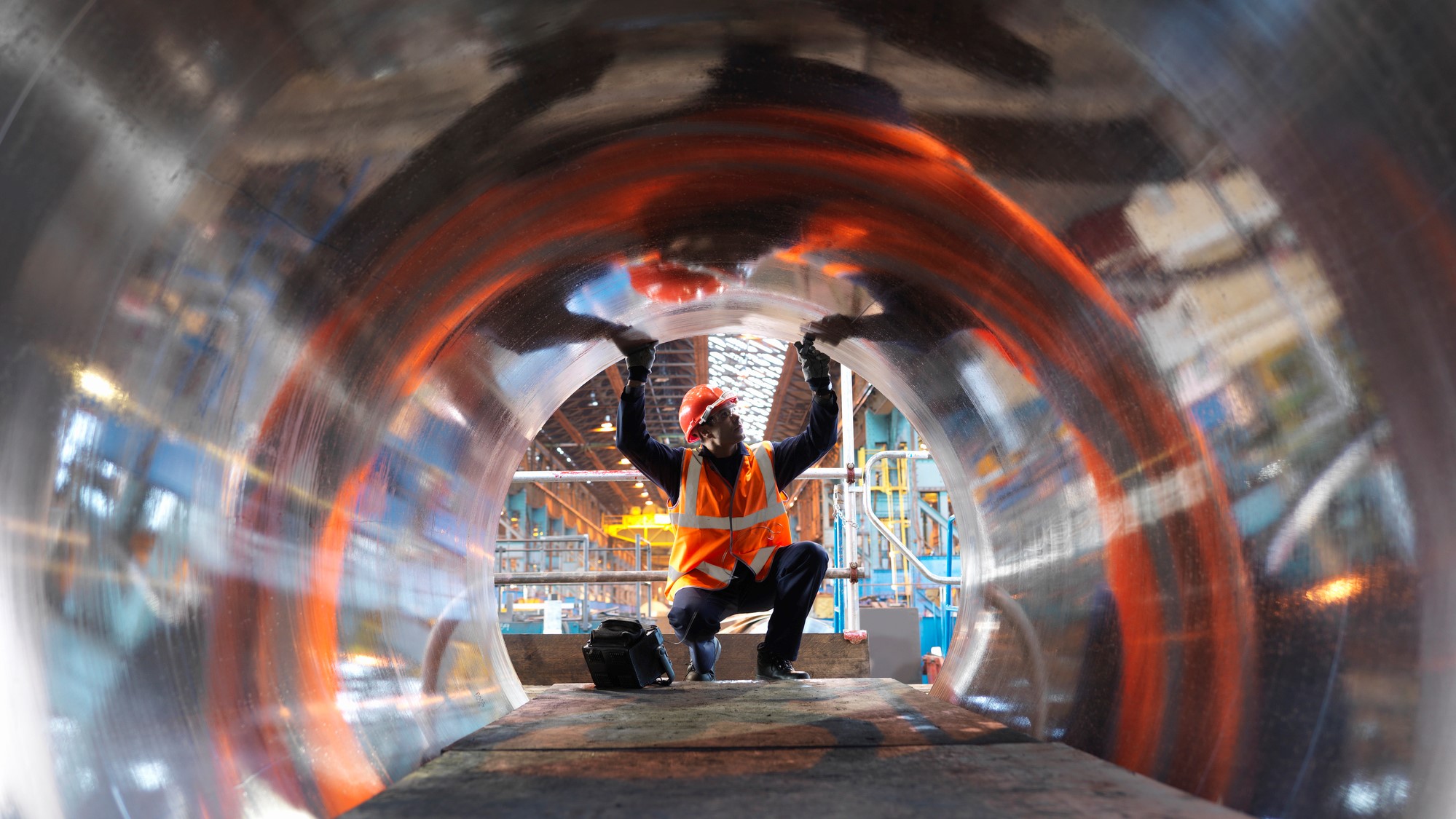What is engineering?
Engineering is a cornerstone of STEAM education (formerly known as STEM education).

Engineering is the application of science and mathematics to solve problems. Engineers figure out how things work and find practical uses for scientific discoveries. Scientists and inventors often get the credit for innovations that advance the human condition, but it is engineers who are instrumental in making those innovations available to the world.
In his book, "Disturbing the Universe" (Sloan Foundation, 1981), physicist Freeman Dyson wrote, "A good scientist is a person with original ideas. A good engineer is a person who makes a design that works with as few original ideas as possible. There are no prima donnas in engineering."
The history of engineering is part and parcel of the history of human civilization. The Pyramids of Giza, Stonehenge, the Parthenon and the Eiffel Tower stand today as monuments to our heritage of engineering. Today's engineers not only build huge structures, such as the International Space Station (ISS), but they are also building maps to the human genome and better, smaller computer chips.
Engineering is one of the cornerstones of STEAM education (formerly known as STEM education), an interdisciplinary curriculum designed to motivate students to learn about science, technology, engineering, the arts and mathematics.
Types of engineering
Mechanical engineering involves the design, manufacturing, inspection and maintenance of machinery, equipment and components as well as control systems and instruments for monitoring their status and performance. This includes vehicles, construction and farm machinery, industrial installations and a wide variety of tools and devices.
Electrical engineering involves the design, testing, manufacturing, construction, control, monitoring and inspection of electrical and electronic devices, machinery and systems. These systems vary in scale from microscopic circuits to national power generation and transmission systems.

Civil engineering involves the design, construction, maintenance and inspection of large infrastructure projects such as highways, railroads, bridges, tunnels, dams and airports.
Aerospace engineering involves the design, manufacturing and testing of aircraft and spacecraft as well as parts and components such as airframes, power plants, control and guidance systems, electrical and electronic systems, and communication and navigation systems.
Nuclear engineering involves the design, manufacturing, construction, operation and testing of equipment, systems and processes involving the production, control and detection of nuclear radiation. These systems include particle accelerators and nuclear reactors for electric power plants and ships, radioisotope production and research. Nuclear engineering also includes monitoring and protecting humans from the potentially harmful effects of radiation.
Structural engineering involves the design, construction and inspection of load-bearing structures such large commercial buildings, bridges and industrial infrastructure.
Biomedical engineering is the practice of designing systems, equipment and devices for use in the practice of medicine. It also involves working closely with medical practitioners, including doctors, nurses, technicians, therapists and researchers, in order to determine, understand and meet their requirements for systems, equipment and devices.

Chemical engineering is the practice of designing equipment, systems and processes for refining raw materials and for mixing, compounding and processing chemicals to make valuable products.
Computer engineering is the practice of designing computer hardware components, computer systems, networks and computer software.
Industrial engineering is the practice of designing and optimizing facilities, equipment, systems and processes for manufacturing, material processing, and any number of other work environments.
Environmental engineering is the practice of preventing, reducing and eliminating sources of pollution that affect air, water and land. It also involves detecting and measuring pollution levels, determining sources of pollution, cleaning up and rehabilitating polluted sites and ensuring compliance with local, state and federal regulations.

Engineers require in-depth knowledge of mathematics, physics and computer applications such as simulations and computer-aided design. This is why most college programs include basic engineering courses in a wide range of topics before students choose to specialize in a particular area.
Careers in engineering: jobs & salaries
Many employers require engineers to obtain state certification as Professional Engineers. Additionally, many engineers belong to the American Society of Professional Engineers and other engineering societies for their areas of specialization.
The U.S. Bureau of Labor Statistics (BLS) has information on various specialized fields of engineering, including educational requirements, job descriptions, work environments and job outlooks. Another source of information on job descriptions, educational requirements and required skills and knowledge for different areas of engineering can be found at MyMajors.com.
Engineers work in many different settings, according to the BLS, including research laboratories, factories, construction sites, nuclear power plants, offshore oil rigs and even on the ISS. Additionally, many engineers work in businesses related to their areas of specialization; for example, an HVAC (heating, ventilation and air conditioning) engineer might own a heating and air conditioning company, and a structural engineer might own a construction company.

Most engineering jobs require at least a bachelor's degree in engineering. State certification as a Professional Engineer, which requires passing a rigorous and comprehensive test, is also required by many employers and to work as a consultant. Senior engineering positions and professorships generally require a master's degree or a doctorate.
Employment of engineers is projected to grow 6% from 2020 to 2030, depending on the field of specialization, according to the BLS. The areas with most projected job growth are sectors experiencing an increase in demand such as renewable energy, oil and gas extractions and robotics. According to BLS, the average annual wage for architecture and engineering occupations was $83,160 in May 2020. This is considerably higher than the average of all occupations which stands at $41,950.
Engineering has matured and expanded over the centuries along with our knowledge and understanding of science, mathematics and the laws of physics and their applications. Today, engineers apply both well-established scientific principles and cutting-edge innovations in order to design, build, improve, operate and maintain complex devices, structures, systems and processes.
It was engineering that brought us out of the caves; it was engineering that took us to the moon; and if we ever make it to the stars, it will be engineering that takes us there. As our knowledge continues to advance, engineers will have new opportunities to find practical uses for scientific discoveries.
As the novelist James A. Michener aptly put it in his novel "Space" (Fawcett, 1983), "Scientists dream about doing great things. Engineers do them."
Additional resources
Looking for a job in engineering or simply wanting to see what career options are available check out Engineer Jobs for the latest listings. Thinking about studying engineering? Kingston University, London has come up with a list of five benefits to studying engineering. The Engineering Council also has useful resources for those considering a career in engineering.
Bibliography
- Anderson, Lisa S., and Kimberley A. Gilbride. "Pre-university outreach: Encouraging students to consider engineering careers." Global J. of Engng. Educ 7.1 (2003): 87-93.
- National Research Council. Enhancing the community college pathway to engineering careers. National Academies Press, 2006.
- Buse, Kathleen, Diana Bilimoria, and Sheri Perelli. "Why they stay: Women persisting in US engineering careers." Career Development International (2013).
- Eastman, Michael G., et al. "To educate engineers or to engineer educators?: Exploring access to engineering careers." Journal of Research in Science Teaching 54.7 (2017): 884-913.
- Bystydzienski, Jill M., Margaret Eisenhart, and Monica Bruning. "High school is not too late: Developing girls' interest and engagement in engineering careers." The Career Development Quarterly 63.1 (2015): 88-95.
- James Michener "Space", Robert Beard Books; Reissue edition (Oct, 1. 1988).
Sign up for the Live Science daily newsletter now
Get the world’s most fascinating discoveries delivered straight to your inbox.

- Daisy DobrijevicReference Channel Editor, Space.com










